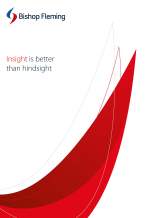With more than 200 members in our Academy team, we've got the capacity and expertise to meet your needs.
What is GAG Pooling?
7th May 2021
What is GAG pooling?
Everywhere you look these days the sector is talking about GAG pooling as the future and one way to help ease the funding crisis in a Multi-Academy Trust.
I’m going to explain the mechanics of how it works but first I want to bust a few myths that people have:
- Cash in the bank is not the same as GAG reserve
- Moving all cash from individual schools' bank accounts into a central trust bank account is not pooling of GAG
- One school 'lending' cash from its individual bank account to the central trust bank account is not a loan (this is just moving cash around within a legal entity)
Actual pooling of GAG can be done at two levels and I will explain each in turn:
In year GAG income
GAG can be pooled by a MAT in line with the academies financial Handbook, which states that a MAT has the freedom to amalgamate a proportion of GAG funding for all its academies to form one central fund.
This fund can then be used to meet the normal running costs at any of its constituent academies within the trust (5.29)
What happens on a practical level is that all the GAG is allocated to the central team to determine how the GAG will be divided amongst its member schools.
This is usually done during the budgeting process which will involve agreement between the MAT leadership team and the individual schools on their budget allocation for income.
Schools are then measured during the year against their agreed budget income (not their actual GAG allocation from the ESFA).
If an individual school is allocated more income than its actual GAG share then this is effectively a contribution from central.
Conversely, if an individual school is allocated less than its actual GAG share then this is a contribution to central, similar in principle to a top slice.
So as you can see there will always be winners and losers, and some schools may be contributing more as their effective top slice than others, and some may be contributing nothing.
To get this right, it is important that the MAT leadership team also have a separate budget which is closely monitored to ensure there is no overspending.
The MAT must also ensure it puts in place an appeals policy to enable constituent academies to appeal if they think they have been unfairly treated (Academies Financial Handbook paragraph 5.30)
GAG reserves
Some MATs have taken the GAG pooling concept a step further and bring brought forward reserves (and reserves on conversion) into the central fund.
This means that all spending by a school will need the approval of the MAT leadership team, as individual schools will no longer be able to make their own decisions on how to spend their brought forward reserves.
This is a big step to take and a MAT that goes down this route is effectively centralising all spending decisions and removing all financial control from the individual schools, apart from day to day basics (PFI income is specifically excluded under 5.29 AFH).
Culturally, pooling GAG is a move from ‘my school’ to ‘all children in the MAT’ and should enable the resources to be directed to the areas in most need across the MAT.
Whilst controversial, it may be the case that by putting the decision making in the hands of the MAT leadership team, real savings can be made on procurement by maximising efficiencies and allowing the experts to do their job.
The important question to ask if your Trust is considering joining a MAT is what is their current or proposed policy on GAG pooling.
If you would like to discuss this further please contact Pam Tuckett on ptuckett@bishopfleming.co.uk





